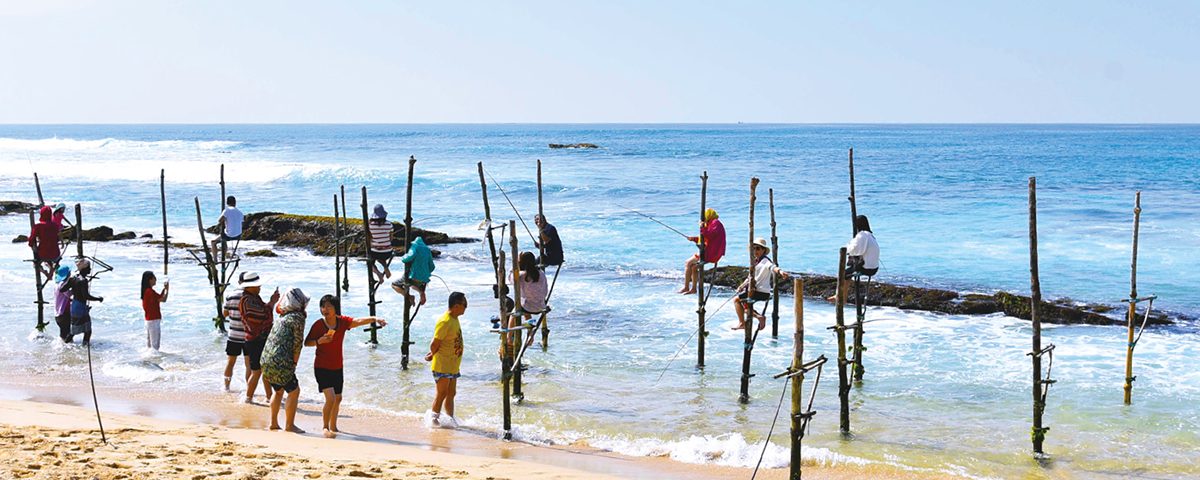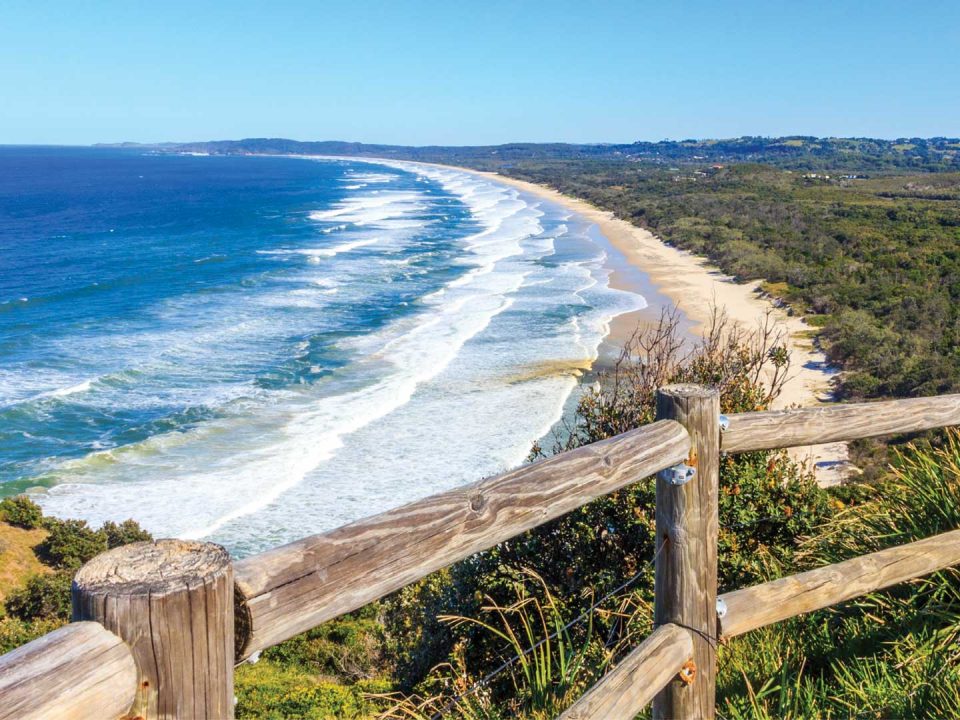STILT FISHING

INSIDE STORY
December 26, 2019
DATELINE HOLLYWOOD
December 31, 2019Go fish in Sri Lanka
Larina Arrowsmith tries stilt fishing while on holiday in the island

Many Sri Lankan picture postcards display silhouettes of men perched on stilts in the sea against the horizon at dusk or dawn. This is an evocative image of history and tradition encapsulated in a simple photograph. It’s a picture that’s been in my head ever since I planned my trip to the island – and an activi-ty that I can’t wait to be a part of.
So as we head to Mirissa to try our luck at stilt fishing – a practice that dates back to the end of World War II – I hope not only to gain an au-thentic experience but also catch a bite for myself.
There’s a group of men sitting on the shore waiting for us and they wave cheerfully as we arrive. They are barefoot and wearing only cut off jeans. Their faces, gnarled by years spent under the sun, are wrinkled but happy as they bid us a warm welcome in broken English.
After a brief introduction, we each choose a fishing perch that’s not too far out and use the step provided to climb up onto the wooden petta (seat). We sit high above the sea so as not to cast a shadow and dangle our fishing rods in the shallow water, hoping to catch some mackerel or herring.
I enjoy this experience immensely as I sit with the sun on my face and breeze in my hair, listening to the lapping of waves, inhaling salty sea air and contemplating life. It’s certainly not a bad way to spend the morning but my fishing skills clearly leave a lot to be desired!
Although the fishermen make it look and sound easy, I soon realise that there’s a lot of skill involved as half an hour passes and I find to my dismay that I’ve caught nothing more than a slightly deeper suntan.
Wondering what I’m doing wrong, I ask one of them for help. He laughs playfully and says: “Madam, you need to be patient.” Then he pro-ceeds to take my rod, cast my line and in what seems like no time at all, there’s a silvery mackerel wriggling at the end of it! He then tosses the fish onto my lap triumphantly before flashing a toothy smile at me.
I decide to take a break and see what else there’s to know about this process. So I approach the men who are still huddled together on the sand and ask them to tell me a little more about stilt fishing. It seems this method of fishing was used a lot more before the 2004 tsunami but has dwindled somewhat since then and most fishermen now engage in stilt fishing as a form of relaxation. They prefer to go deep-sea fishing to earn serious money.
Feeling slightly disappointed but deciding to simply embrace the experience, I return to my stilt and channel my most sterling reserves of pa-tience for another 40 minutes until eventually, the heat of the morning sun forces me to concede defeat. Obviously, managing to catch something would have been the perfect ending to my day but unfortunately, it was not to be this time.
If the stilt fishermen have decided that there are more efficient ways to catch what they need, then who am I to argue? I’ll have to be content with my memories and photographs. Keeping elements of its heritage alive is vital in any culture but so too is learning lessons from the past – one of the most important of these being to know when to give up!




STILTED TRIVIA
- The Sinhala term for stilt fishing is ritipanna. It’s the traditional method for fishing that’s practised by many fishermen along the southern coast of Sri Lanka.
- This method started being used soon after World War II when food shortages and crowded fishing spots along the island’s coastline forced some of its residents to design their own ways of acquiring food.
- These skills were then passed down to at least two generations of fishermen living along a 30 kilometre stretch on the southern shore between the towns of Unawatuna and Weligama.
- Today, stilt fishing is most popularly seen in locales such as Ahangama, Weligama and Thalarambe. And due to its popularity as a tourist attraction and photography subject, the beaches in Koggala, Kathaluwa and Kalpitiya have also seen a few people resume this activity.
- Only a handful of fisher families continue to practise stilt fishing and many of them take up other work in the off-season.
- The stilt takes the form of a narrow pole that’s tied to a stick, which is anchored to the seabed. Fishermen climb onto this stick and settle on the pole. From this position, they have clear views into the water and can manipulate their targets using the rod and spear.
- Stilt fishing season is at its peak during the southwest monsoon because fishermen who generally use boats end up using stilts since the sea is too rough.
- The morning session goes on till about 9 a.m. or until the day’s catch has been sold.
- Fishermen on stilts usually catch small fish like spotted herring and mackerel.
- The evening stilt fishing session is to entertain foreigners usually, which pastime ends at sunset.
TOP TIPS
- For genuine sightings, it’s best to travel off the beaten track by hiring a scooter or taking the bus.
- Unawatuna is a small fishing village close to Galle where stilt fishermen can be seen.
- The drive from Colombo to Unawatuna along the coast takes about four hours. But by spreading the trip over four days, you’ll have the opportunity to see many other beautiful sights too.
- October is when the official season starts and it’s the best time to visit.
- It costs around US$ 6 for a scooter and about Rs. 500 to fish while seated on a stilt.







